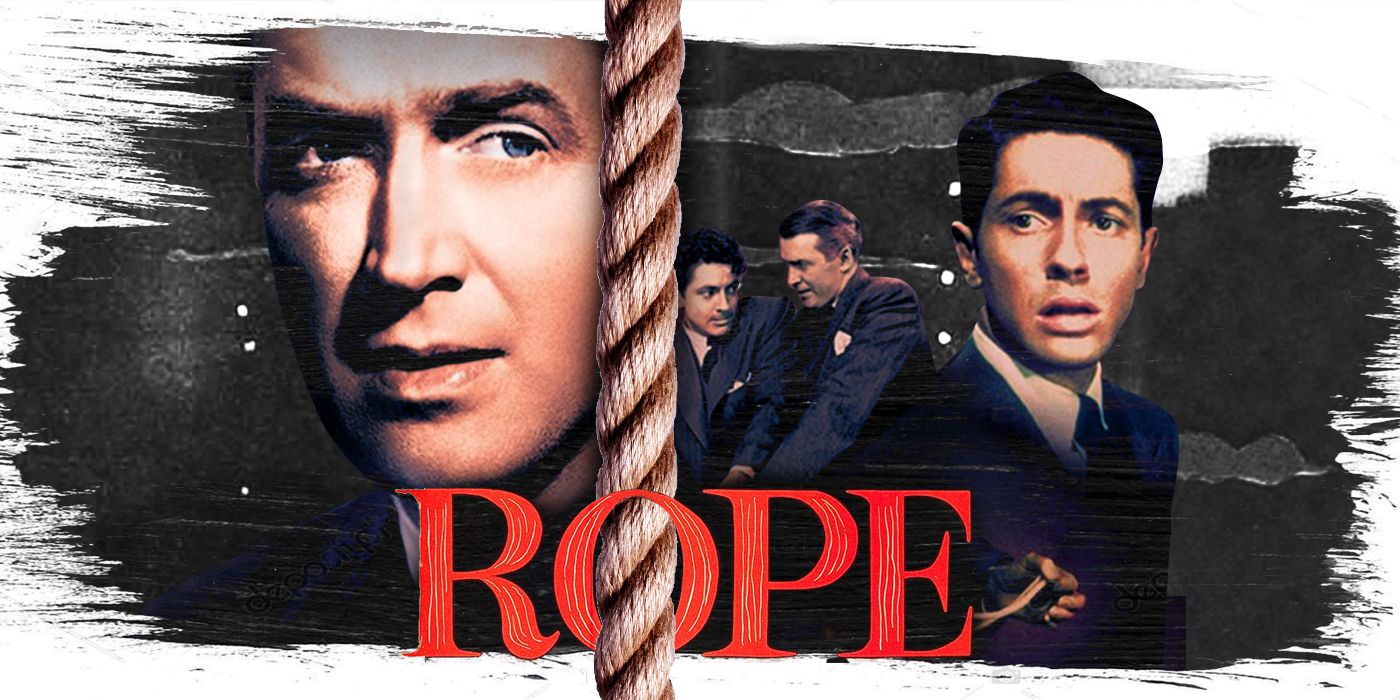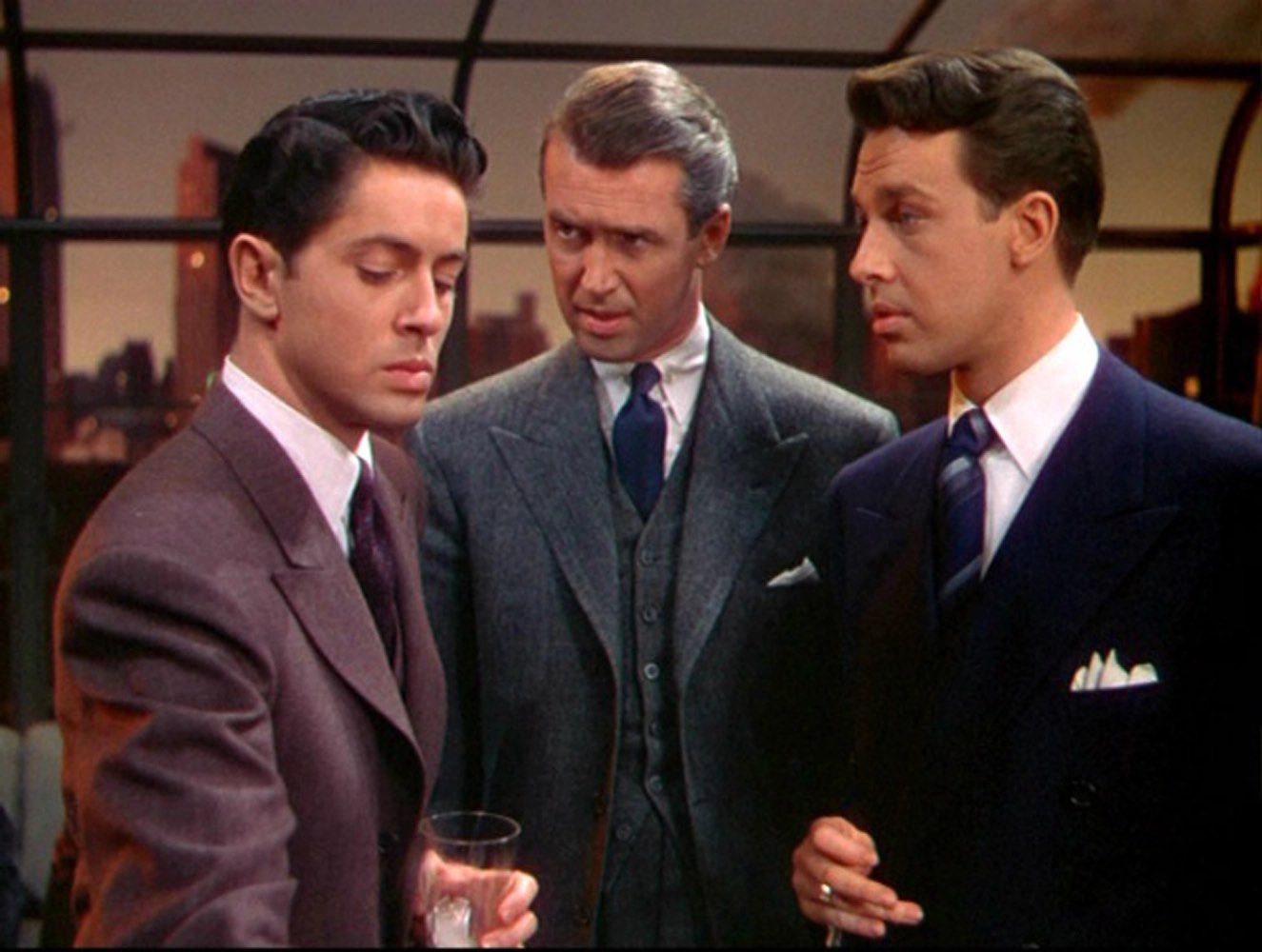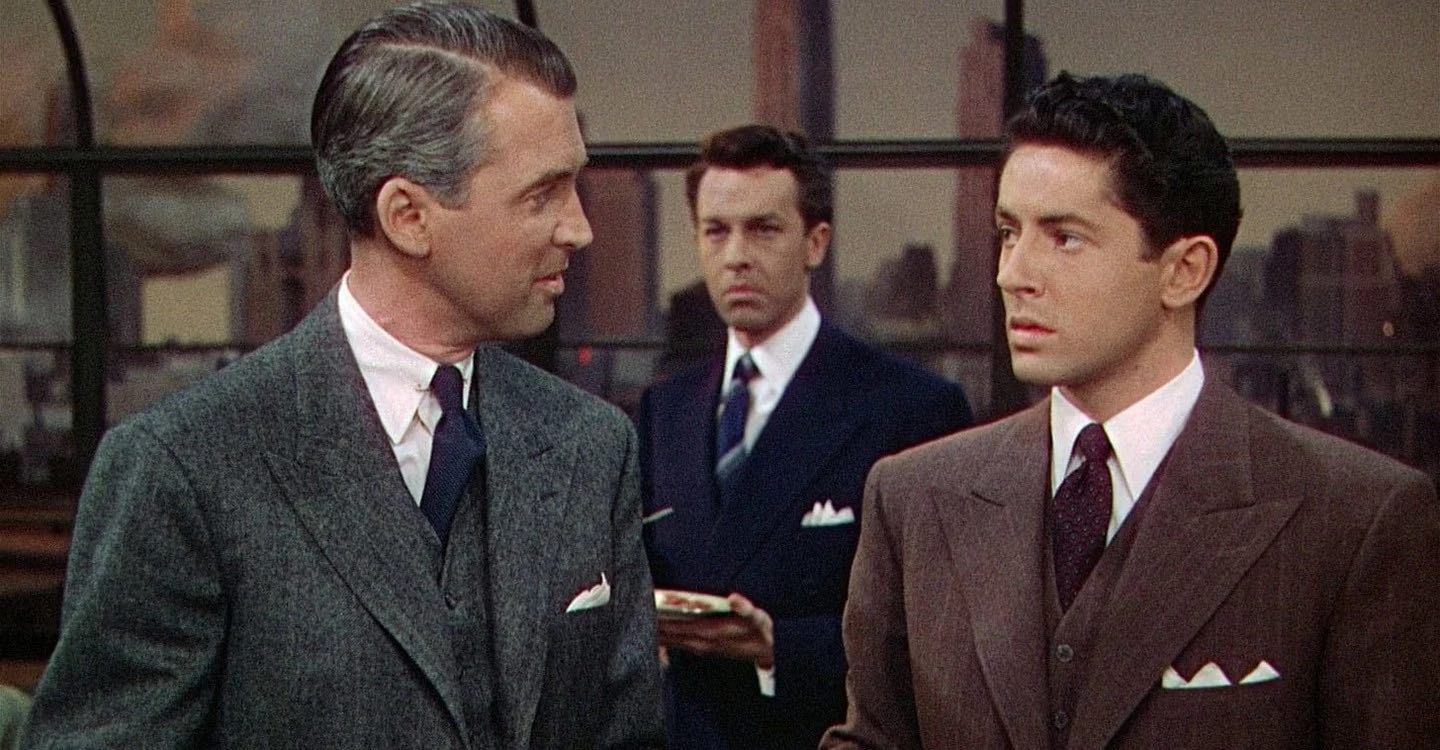The one-shot film has become a surprisingly popular cinematic trend in recent years. Whether it's in the service of a languid odyssey through history (Russian Ark) or a pulse-pounding crime thriller (Victoria), the process of actors and crew playing a film through without any edits is an increasingly common occurrence. The rise of digital video technology is no doubt responsible for this trend. Certain digital equipment allows for a nearly unlimited freedom in how long a take rolls on. Back when directors used celluloid, they could only achieve shots as long as a single spool of film, going up to 10 minutes at most. Despite this technical limitation, British master director Alfred Hitchcock was intent on making his own one-shot film long before it was feasible. In 1948, he accomplished this… sort of.
Rope is often considered Hitchcock’s most experimental film. It is composed of 10 long takes (11 if the opening credits sequence is included) that each run about the length of a film spool. In order to create the illusion of a single unbroken shot between them, Hitchcock employed a method of hidden cuts that has since been used on recent faux-one-shot movies Birdman and 1917. The hidden cuts in Hitchcock’s film aren’t quite as skillfully hidden as they are in those later works, and a viewer can easily identify them if they know what to look for. Oftentimes the camera will approach a subject so closely that the frame is momentarily engulfed in shadow. It is during this complete darkness that the camera would cut. The crew would then switch spools and begin the next take in the darkness, before pulling away from the nearby subject to continue the scene, hardly losing a beat. Despite the sometimes awkward effect of getting so close to characters and objects, the cuts themselves are entirely invisible.
So, what was the purpose of this experiment? On one level, it’s certainly just a gimmick. Hitchcock was fond of this kind of attention-grabbing trifle, later enforcing a “no late admission” policy for Psycho in order to dramatically stress the importance of every moment of that film. But Hitchcock had far more artistic integrity than a mere gimmick filmmaker, and one can’t deny just how well-suited Rope’s long take style is to its story, helping to enrich both its emotional and thematic content. Adapted from a play of the same name by Patrick Hamilton, the film follows two young Harvard graduates who murder their former classmate in their Manhattan penthouse, before inviting the victim’s closest friends and family over to the scene of the crime for a party. The guilty duo believe themselves to be something like Nietzschean Supermen, whose “superior intelligence” allows them to transcend conventional morality. The act of murder and subsequent party then become a means of proving this to themselves.
Because of the film’s style, the party occurs in real time, which achieves two major things. In one sense, it preserves the original play’s unities of time and space. Never is the viewer’s attention permitted to stray from the relevant setting of the evening at the penthouse. This helps the film to maintain a tight dramatic focus. In another sense, the real-time pacing helps build suspense. The central conflict of the film is whether the two murderers will get away with what they’ve done. They have recklessly hidden their victim’s body in the very chest on which refreshments are laid out for the party, because Brandon (John Dall) gets a sick thrill out of this sort of dark irony. Phillip (Farley Granger), on the other hand, is crippled by the weight of what they’ve done, and his fear of being caught is forcefully expressed by the style. The lingering takes allow for close calls to play out excruciatingly, from a housemaid nearly infiltrating the chest while putting some things away to a guest finding the victim’s hat left over in a closet.
If the suspense is meant to put the audience into the headspace of the killers, then a deeper, thematic intent of the one-shot style is indicated. The camera, which moves restlessly about the penthouse and lingers on specifics, provides a necessarily subjective perspective. It never allows for a distant, objective view of anything going on. Unemotional wide shots are rare, and as the camera freely travels amongst the partygoers, the viewer gets the sense that they too are a guest at this party. The audience, however, has crucial information that the other guests do not: the fact that there’s been a murder. This separates the viewer from the crowd and further binds them to the killers. The film even begins with the murder itself (something that would have been all the more shocking back in 1948), leaving the viewer to brush this off for the sake of the party just as Brandon and Phillip have to. In this manner, the audience is implicated for the murder by the subjectivity of the unbroken take. Having been shaped into a party guest by the film’s style and given the heavy knowledge of the killing early on by its narrative structure, the viewer is made to deeply understand and share the sense of creeping guilt that hangs over the criminals’ heads throughout the otherwise mundane party.
For a film whose early attempt at a one-shot style is so notorious, it may come as a shock that there are in fact several hard cuts in the film, not hidden by any diversion into shadows. They were meant to help projectionists maintain the order of the reels on release. This remains surprising even to those who have seen the film, as Hitchcock plays into the camera’s sense of subjectivity to help make the cuts nearly imperceptible. Everytime a hard cut occurs, it is a shot/reverse shot. This is to say that the end of the shot before the cut will be of a character looking toward a second character, and the beginning of the shot after the cut will be of the second character from the point of view of the first. This is one of the basic building blocks of conventional film editing, and most viewers have trained themselves not to notice when it happens. The technique leaves the few hard cuts hardly noticeable while maintaining the stylistic attachment to the subjective perspective of the characters.
Rope received a mixed reaction on its release, and Hitchcock himself would later dismiss it as “an experiment that didn’t work.” But this neglects a certain pull the film has, which only partially concerns its continued influence on contemporary digital experiments. One motive Brandon constantly ruminates on with Phillip for their crime is that, if done just right, the murder and subsequent party can reach the level of fine art. It may be a perverse sentiment, but in a film that so deeply marries the perspective of these murderers to that of the viewer, while showing these grotesque events with a high degree of cinematic grace and sophistication, it starts to make a disturbing amount of sense. And that’s likely just what the macabre master Hitchcock wanted.



